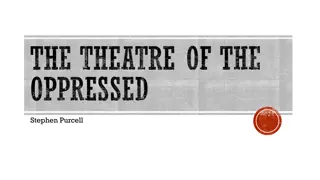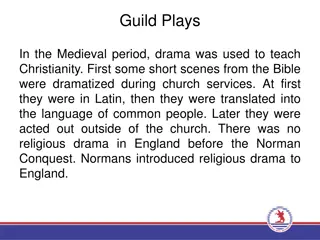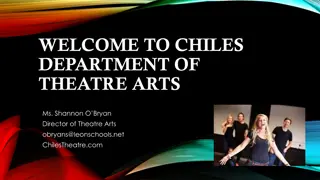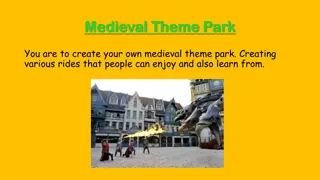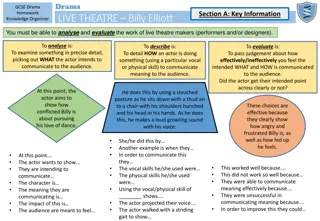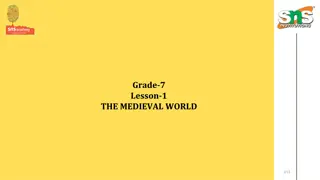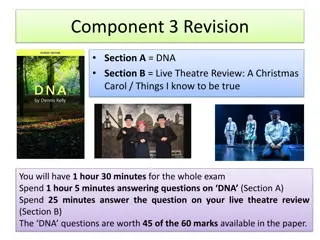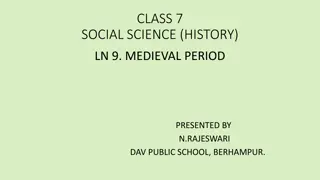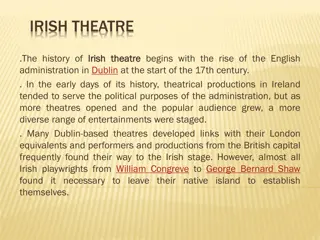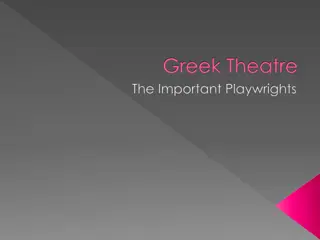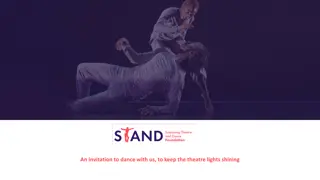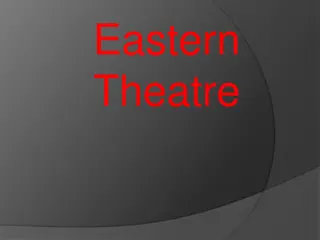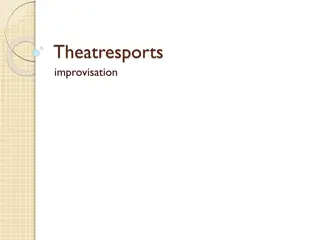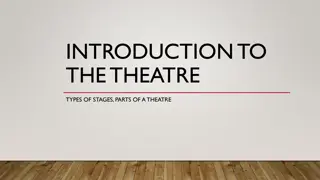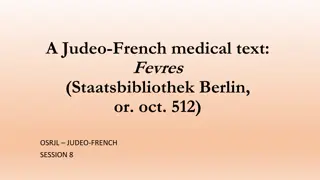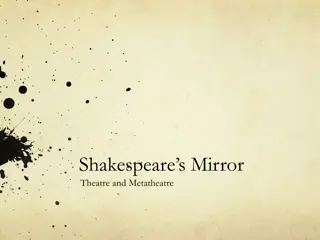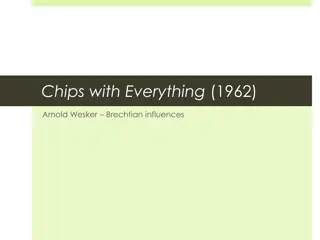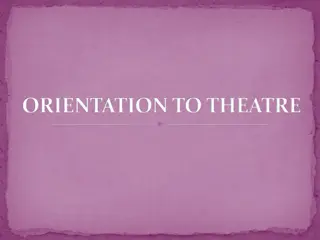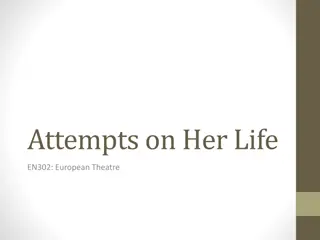
Medieval Theatre: Origin, Evolution, and Impact on Society
Explore the fascinating journey of Medieval theatre from its roots in religious worship to the development of Miracle and Mystery plays, showcasing technical innovations and popular characters like the Jester. Uncover how this art form influenced society and entertainment during the medieval period.
Download Presentation

Please find below an Image/Link to download the presentation.
The content on the website is provided AS IS for your information and personal use only. It may not be sold, licensed, or shared on other websites without obtaining consent from the author. If you encounter any issues during the download, it is possible that the publisher has removed the file from their server.
You are allowed to download the files provided on this website for personal or commercial use, subject to the condition that they are used lawfully. All files are the property of their respective owners.
The content on the website is provided AS IS for your information and personal use only. It may not be sold, licensed, or shared on other websites without obtaining consent from the author.
E N D
Presentation Transcript
Like the Greeks used theatre to worship Dionysus, Christians introduced theatrical performance to the church and its mostly- illiterate congregation as a means of worship and teaching the gospel.
Priests, nuns, and choirboys were the only ones who could perform because all plays were written in Latin. At some point, the plays were translated so that the common man could participate
Groups, not associated with the church, began performing Miracle and Mystery plays. They were quickly shut down by the church. These pioneers represented the first acting companies and were later recognized and patronized by the nobles
Miracle and Mystery Plays Passion Play Mansion Guilds Cycle Morality Play Masque Pageant Cart
Noahs wife was a nag Tower of Bablewas unending comedic dialogue Audience s favorite character to make fun of was Satan Gave viewers a frighteningly enjoyable incentive to be good His assistants adorned horrific masks and popped into the story for no apparent reason. Used acrobatics and farcical miming Became the most prolific symbols of the Medieval period; the Jester
Technical devices and special effects were used Trap Doors Cranes that allowed angels to fly Most fascinating was Hell s Mouth moving jaw, real flames, and smoke bellowing from its bowels it consumed characters who were too evil for Heaven. Took 17 men to operate it
Example of a Cycle Notice that Satan s assistant is climbing on board
Pageant Cart The acting area is not limited to the stage. Notice the Angels in the heavens
Example of a cycle When one cart finished their part of the story, it would move on and the next cart would move into its place. This would continue until a story was told completely.
The Second Shepherds Play A secular play about a clever scoundrel named Mak who steals a sheep, hides it in a crib, and passes it off as his own son. Everyman An Allegorical Morality play in which Everyman is summoned to meet Death, appear before God, and seek salvation. Characters include; Five Wits, Fellowship, Kindred, Discretion, Beauty, Strength, Knowledge, and Good Deeds

